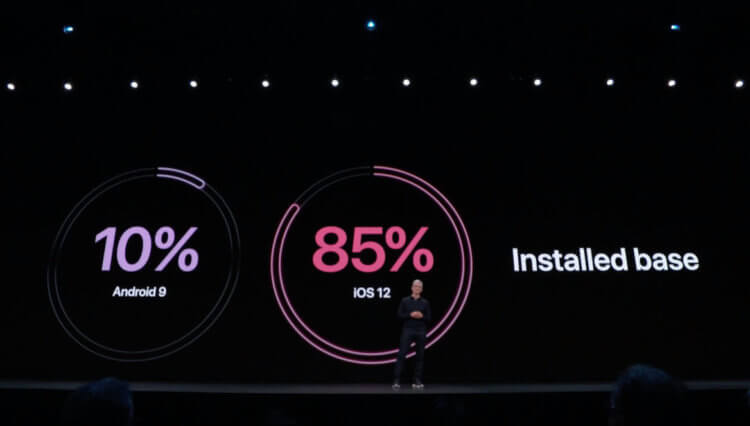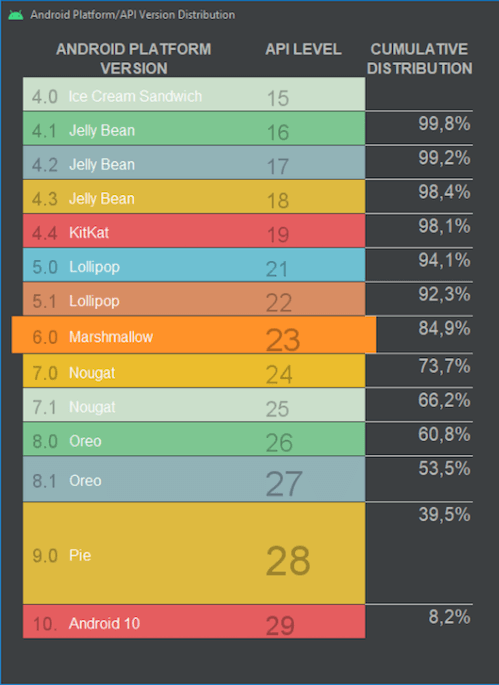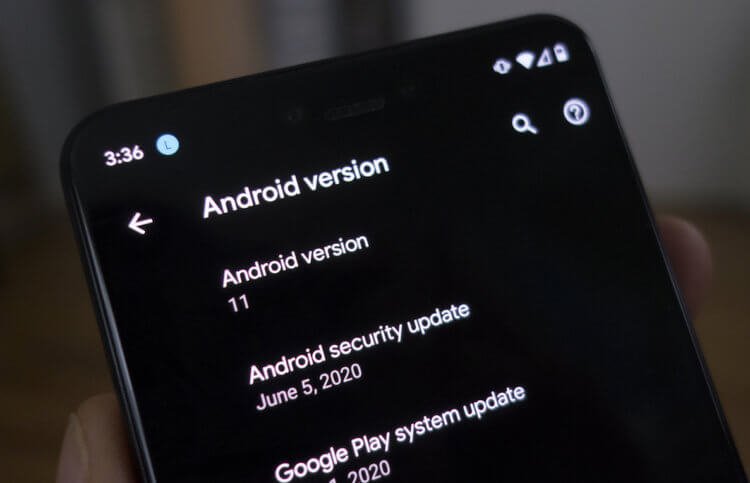Statistics is a very conditional thing, if not to say controversial. It is affected by its variability depending on who makes the calculations. Therefore, statistics are often used to manipulate real numbers depending on which idea needs to be pushed through. But, as strange as it may sound, there are really objective statistics. It is usually divided Apple when it publishes a summary of the percentage of the new version iOS to the old ones. Unfortunately, Google with its Android never dreamed of this.

iOS 13, like all previous versions iOS, has reached a share that Android has never reached
Apple published the latest install report iOS, from which it follows that iOS 13 is set to 81% of all ever released iPhone and iPod Touch. iPadOS, which Cupertino decided to isolate from the original OS, has a slightly weaker performance – 'only' 73%. However, even that is enough to plug Google's mobile platform. Not a single – even the oldest – version Android has ever had such indicators, let alone Android 10. Therefore, at some point, the analysts of the search giant decided not to publish data at all about the number of installations.
Share of different versions Android

Data of the new method of calculating the share Android
Google's silence lasted for almost a year. However, shortly before the landmark date, the company introduced a new way of calculating the share of different versions Android. Analysts confused the calculation method so much that many got the impression that it was the same people who were developing the point system for the Russian Pension Fund. As a result, the goal of obfuscating the public was accomplished, and the true information behind it was hidden from those who should have understood it.
The calculation method chosen by Google is called cumulative. It is always given only in comparison and indicates how many devices are running on the OS version newer than the selected one. Therefore, if we look at the graph provided by the search giant, we can see that today in the world 99.8% of devices with Android 4.1 and newer, 84.9% of devices with Android 6.0 and newer and only 8.2% with Android 10. The indicator is frankly weak, considering that Android 10 came out at about the same time as iOS 13 .
How to renew support Android
Google felt ashamed and tried to hide the true state of affairs in the Android smartphone market. Yes, the company was unable to hide the distribution numbers Android 10, but it was able to shift the focus from older versions of the operating system. Not to say that it helped her a lot, but at least it made it possible not to pay public attention to how many devices actually work on very ancient assemblies Android, the place of which is only in a museum, but in no way not in the hands of users in 2020.

Android 10 occupies less than 10% of the market for all Android devices, and this is sad
Can Google fix things? I think it can, but obviously doesn't want it too much. The search giant has a great tool to influence smartphone makers right now. These are Google Play services, which are distributed under a license issued by Google, deciding who is worthy of it and who is not. Huawei, for example, is not eligible for this license and cannot install the search giant's services on its smartphones. And if it does, Google will quickly block them.
In my opinion, this is a great way to force producers to follow the new rules. All you need is to oblige them to update their smartphones not for 2 years, but at least 3-4 years, and not once a year, but every month, supplying them with security updates. Then the share of fresh versions Android will go uphill, and users will receive a secure OS, and the liquidity of smartphones based on Android will grow sharply. After all, they are falling in price so quickly precisely because of weak support, and not because of low quality hardware or lack of functionality.
